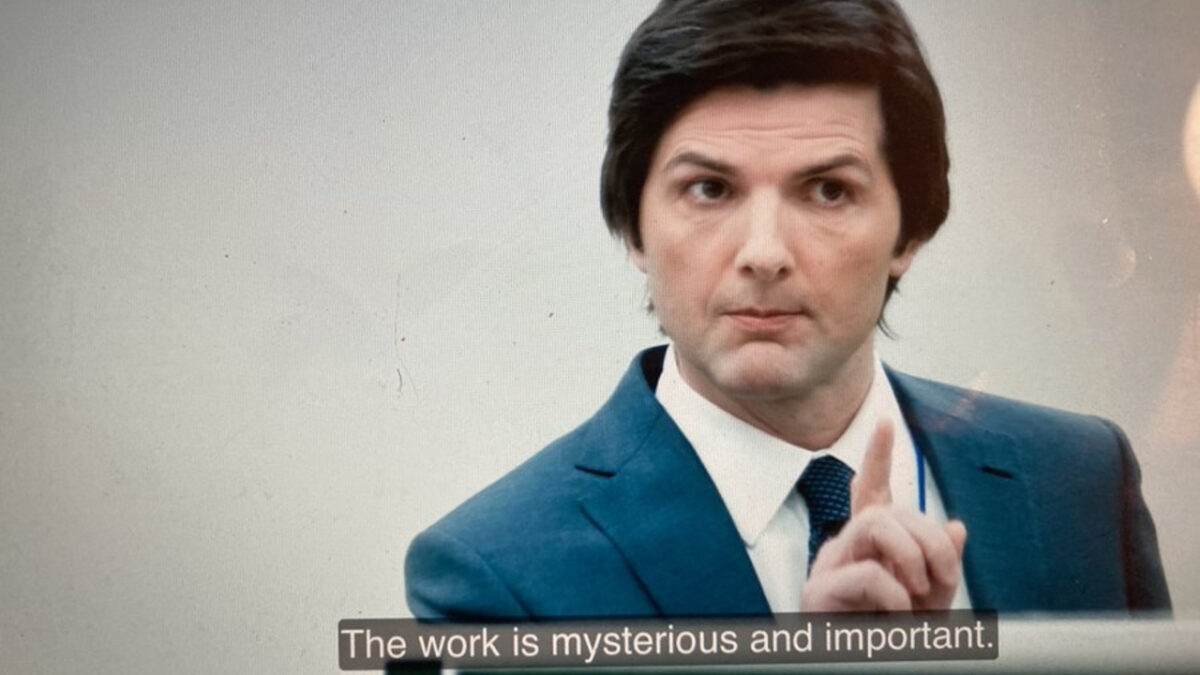What’s hot right now:
The Hidden Cost of Not Doing Marketing: Why Cutting Back is a Bigger Risk Than Investing
Marketing often gets an undeserved bad rap. A recent study found that over half of business leaders still see it as a cost center rather than a revenue driver. CEOs and CFOs love tangible numbers, and unfortunately, marketing and PR are often categorized as “nice-to-have” creativity—not essential revenue drivers. (See below for my favorite meme on the Internet right now that sums this up. IYKYK Severance fans.)

But here’s the reality: taking a year off from marketing and PR doesn’t just pause your brand’s momentum—it sets you back significantly. Brands that cut marketing spend can take years to regain lost share of voice (SOV) and brand affinity.
Nielsen research indicates that a brand can lose approximately 2% of future revenue for every quarter it ceases advertising. The longer you go dark, the harder (and more expensive) it is to rebuild your relevance. Additional Nielsen research indicates it can take brands three to five years to recover the equity lost due to halted advertising.
Consumers and buyers move on, competitors fill the gap, and your brand’s presence in the market erodes. Another analysis found that companies that cut advertising during crisis or uncertainty saw their brand awareness and market share shrink, while those that maintained or increased investment emerged stronger.
Beyond the immediate risks of fading into obscurity, the B2B marketing landscape is undergoing a seismic shift. Today’s B2B buyers behave more like B2C consumers, conducting extensive research independently before ever engaging with sales teams. In fact, 80% of B2B buyers initiate contact only after they’re 70% through their buying journey.
If your brand isn’t visible across digital channels—be it trade outlets, search engines, social media, or influencer platforms—you’re essentially invisible to potential customers. The traditional playbook of relying solely on outbound sales and expecting buyers to come to you is obsolete. Brands that fail to adapt by integrating B2C-inspired tactics, such as personalized content and influencer collaborations, risk falling behind in lead generation and revenue growth.
The cost of inaction isn’t just theoretical.
B2B marketers are recognizing the need to diversify their strategies to stay competitive. A recent survey revealed that 60% plan to increase investment in social media advertising and AI tools, 53% in video content, and 50% in podcast advertising.
These channels, once dominated by B2C brands, are now proving essential in capturing the attention of modern B2B buyers. By neglecting these avenues, companies risk not only losing their current audience but also missing out on engaging the next generation of decision-makers.
That being said, marketing leaders have to meet the C-suite halfway: if we want marketing to be seen as a revenue driver, we need to measure and communicate its value in ways that matter to business leaders.
Vanity metrics like social media likes and impressions aren’t enough. Instead, marketers should focus on metrics that tie directly to business outcomes: revenue impact, customer acquisition cost, retention rates, and pipeline influence. For example, rather than simply celebrating media placements, we should highlight how they drive inbound inquiries, shorten sales cycles, or boost share of voice in key categories. Website traffic spikes after a media hit? That’s your marketing working. More high-intent prospects reaching out? That’s proof marketing fuels sales.
At the end of the day, the biggest risk isn’t in allocating budget to marketing—it’s in the repercussions of not doing so. The brands that understand this and proactively adapt to the evolving landscape will thrive. The ones that don’t? Their competitors will be happy to take their customers off their hands.
Industry News:
Nation’s Restaurant News (NRN) published the second edition of Influencer Insider, a column that highlights fast-moving consumer trends and influencer marketing practices. The column is fueled by Brilli™, our new market research complement that uncovers niche insights through influencer audience polling.
In this edition, three foodie creators with over 8 million followers explore what makes a strong influencer marketing campaign. Spoiler: authenticity and relevance.

News we’re noting:
- Press releases became even more hyperbolic in 2024 – It’s time to stop saying thrilled, groundbreaking or cutting-edge
- You won’t believe how B2B marketing is shifting – here are 5 ways to land more deals – Hint: It’s going down in the LinkedIn DMs
- Content marketing in 2025: 6 strategies you can’t ignore – We’ve been optimizing content for Google for years; it’s time to start optimizing for ChatGPT, the new search engine
- Instagram tests a ‘dislike’ button – This downvote feature is being tested in Feed posts and on Threads
- The rise of news influencers: how they’re reshaping traditional media – As traditional newsrooms shrink and consumer habits shift, it’s time to expand those press lists
- Trends vs. fads: Navigating food culture online – Jumping on a social media movement can be a major growth driver, but it involves risk; here’s when to dive in
- The top 5 food and beverage marketing ideas to know about right now – Campaigns that “Got that Dawg” in them (IYKYK)
Fresh off the press: Client wins
- Rubix Foods wins “Best in Social Media: Crowdsourcing + Co-Creating” 2025 Innovation SABRE Award
- T. Marzetti wins 2025 Product of the Year awards for New York Bakery gluten free Texas toast and Texas Roadhouse mini rolls
- The world’s best single barrel American rye whiskey, according to the World Whiskies Awards
- Flower power: Gen Z craves floral menu innovations
- How strategic waste partnerships drive cost savings and sustainability
Belle headlines
Belle’s founder, Kate Finley, shared a BIG update on what’s next for Belle. In this recent blog, Kate dives into the strategic moves we’re making to stay ahead in the ever-changing PR and marketing landscape. From embracing innovation and AI to expanding our capabilities, this update offers a glimpse into how we’re shaping the future of PR.


